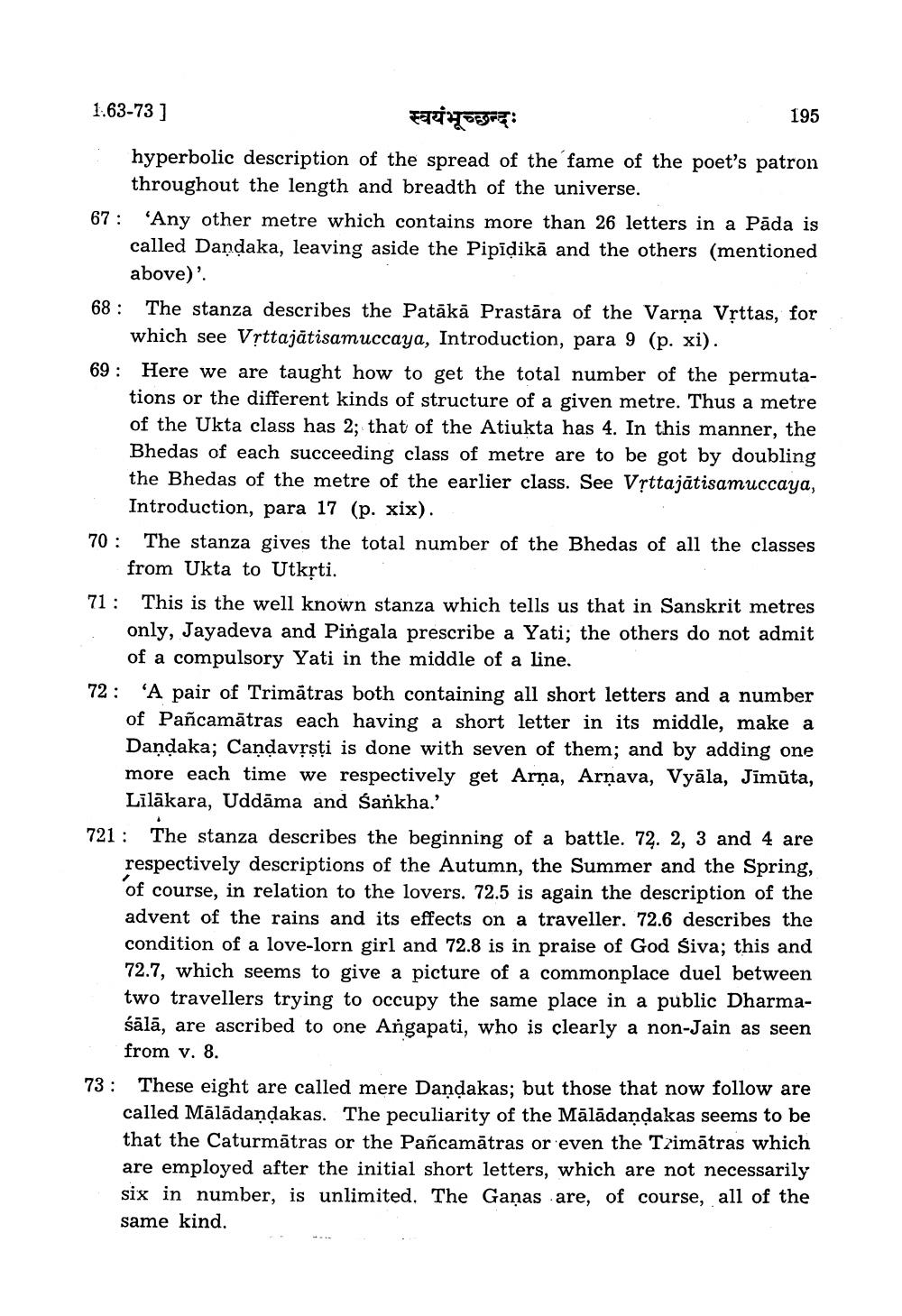________________
1.63-73]
67:
स्वयंभूच्छन्दः
hyperbolic description of the spread of the fame of the poet's patron throughout the length and breadth of the universe.
70:
195
68 The stanza describes the Patākā Prastāra of the Varna Vṛttas, for which see Vṛttajatisamuccaya, Introduction, para 9 (p. xi).
'Any other metre which contains more than 26 letters in a Pāda is called Dandaka, leaving aside the Pipiḍikā and the others (mentioned above)'.
69 Here we are taught how to get the total number of the permutations or the different kinds of structure of a given metre. Thus a metre of the Ukta class has 2; that of the Atiukta has 4. In this manner, the Bhedas of each succeeding class of metre are to be got by doubling the Bhedas of the metre of the earlier class. See Vṛttajatisamuccaya, Introduction, para 17 (p. xix).
73:
The stanza gives the total number of the Bhedas of all the classes from Ukta to Utkṛti.
71: This is the well known stanza which tells us that in Sanskrit metres only, Jayadeva and Pingala prescribe a Yati; the others do not admit of a compulsory Yati in the middle of a line.
72: 'A pair of Trimätras both containing all short letters and a number of Pañcamātras each having a short letter in its middle, make a Dandaka; Candavṛṣṭi is done with seven of them; and by adding one more each time we respectively get Arṇa, Arnava, Vyāla, Jimūta, Līlākara, Uddāma and Śankha.'
721: The stanza describes the beginning of a battle. 72. 2, 3 and 4 are respectively descriptions of the Autumn, the Summer and the Spring, of course, in relation to the lovers. 72.5 is again the description of the advent of the rains and its effects on a traveller. 72.6 describes the condition of a love-lorn girl and 72.8 is in praise of God Siva; this and 72.7, which seems to give a picture of a commonplace duel between two travellers trying to occupy the same place in a public Dharmaśālā, are ascribed to one Angapati, who is clearly a non-Jain as seen from v. 8.
These eight are called mere Dandakas; but those that now follow are called Mālādaṇḍakas. The peculiarity of the Mālādaṇḍakas seems to be that the Caturmātras or the Pañcamātras or even the Tzimātras which are employed after the initial short letters, which are not necessarily six in number, is unlimited. The Ganas are, of course, all of the same kind.




